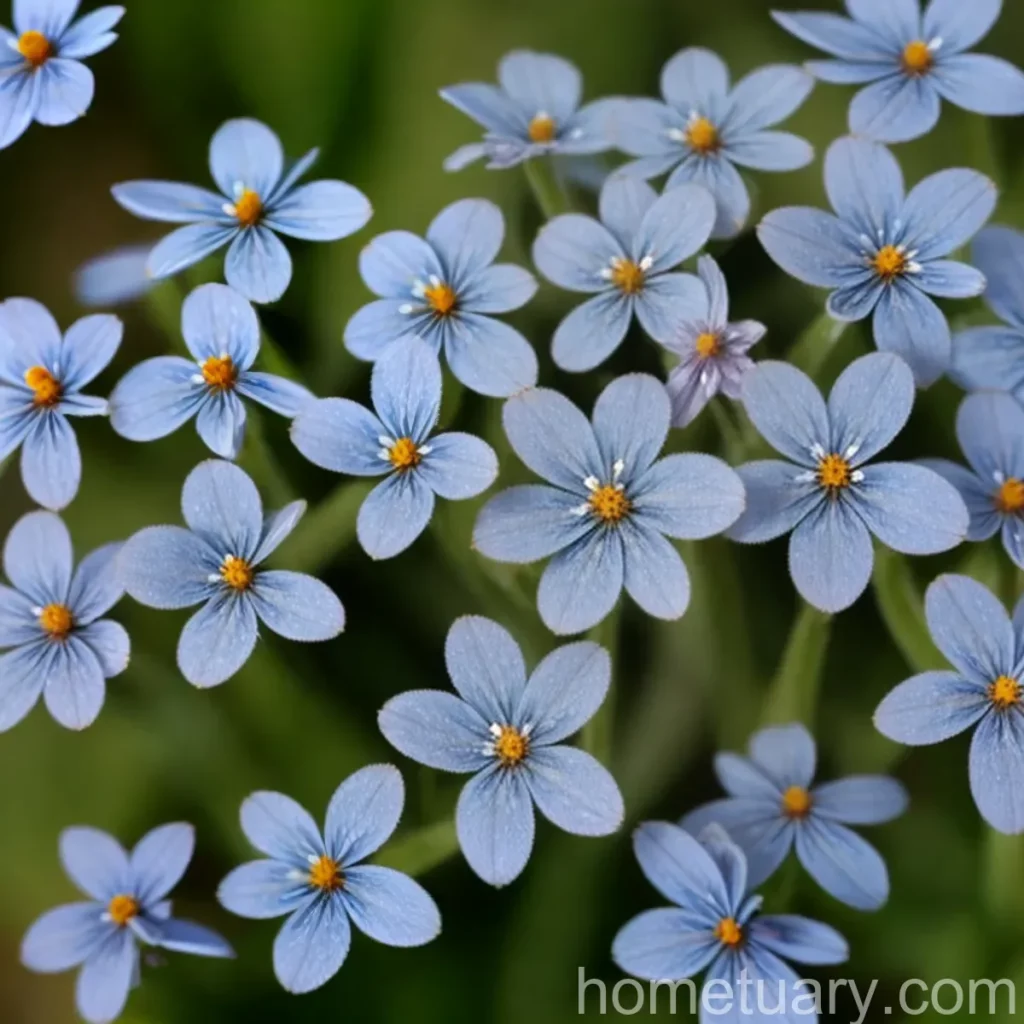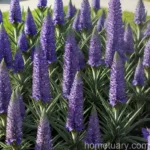All About True Forget-Me-Not (Myosotis scorpioides)
What is True Forget-Me-Not?
True forget-me-not, scientifically known as Myosotis scorpioides, is a delightful perennial plant that belongs to the Boraginaceae family. This charming plant is native to Europe and can be found in wetlands, meadows, and along riverbanks. True to its name, forget-me-nots are often used as a symbol of remembrance and enduring love.
True forget-me-nots are known for their dainty, five-petaled flowers in shades of blue, pink, or white, with yellow centers. The foliage consists of delicate, lance-shaped leaves that form a low mound, creating an appealing carpet of greenery. This plant is loved by gardeners for its ability to attract butterflies and bees, and its prolific blooming period, which lasts from late spring to early summer.
In this comprehensive guide, we will delve into the various aspects of true forget-me-not (Myosotis scorpioides) care, including its cultural requirements, practical uses, and tips for propagation. Furthermore, we will explore maintenance, potential diseases, and common pests that may affect this lovely plant.
So, if you’re a gardening enthusiast looking to cultivate the enchanting true forget-me-nots in your garden or landscape, this guide is your go-to resource for all things related to this captivating plant.
Key Takeaways – True Forget-Me-Not (Myosotis scorpioides)
- Scientific Name: Myosotis scorpioides
- Family: Boraginaceae
- Native Habitat: Europe
- Common Colors: Blue, pink, white
- Bloom Time: Late spring to early summer
- Usage: Ornamental, landscaping, and symbolic
Now, let’s dive deeper into the various aspects of caring for true forget-me-nots, from their cultural requirements to practical uses and beyond.
Culture
Water
True forget-me-nots thrive in consistently moist soil, making them an excellent choice for areas with high humidity or near bodies of water. The plant requires regular watering, especially during dry spells or hot summer months. It is crucial to ensure that the soil remains consistently moist, but not waterlogged, as overly wet conditions can lead to root rot.
Sunlight
When it comes to sunlight, true forget-me-nots prefer partial to full shade, particularly in regions with warm summers. They can tolerate some morning sun but generally prefer cooler, shaded conditions during the hottest parts of the day to prevent wilting and scorching of the leaves.
Fertilizer
These plants are not heavy feeders, but they can benefit from a light application of a balanced, all-purpose fertilizer in early spring to promote healthy growth and prolific flowering throughout the season. A slow-release or organic fertilizer can also be used according to the manufacturer’s instructions to avoid overfeeding.
Soil
True forget-me-nots thrive in moist, well-draining soil that is rich in organic matter. A slightly acidic to neutral pH range of 5.5 to 7.0 is ideal for these plants. Amending the soil with compost or organic matter can improve the texture and moisture retention capabilities, providing an optimal growing medium for true forget-me-nots.
Pruning
Regular deadheading, the process of removing spent flowers, can encourage continuous blooming and prevent self-seeding, resulting in a tidy and prolonged flowering display. Additionally, cutting back any leggy or discolored growth can help rejuvenate the plant and maintain a compact, attractive appearance.
Propagation
True forget-me-nots can be propagated through several methods, including division, seed sowing, and root cuttings. Here’s a brief overview of each propagation technique:
Division
Division is a straightforward method of propagation that involves separating the plant’s root ball into multiple sections, each containing viable roots and shoots. This can be done in early spring or early fall, and the resulting divisions can be immediately replanted in suitable locations to establish new plants.
Seed Sowing
Seeds can be collected from the spent flowers of true forget-me-nots and sown in a prepared seedbed or containers filled with a well-draining seed-starting mix. The seeds should be surface-sown and kept consistently moist until germination occurs. Once the seedlings have developed several sets of true leaves, they can be carefully transplanted to their permanent growing positions.
Container Popularity
True forget-me-nots are esteemed for their versatility and suitability for container planting. Their compact growth habit, charming flowers, and preference for moist conditions make them an excellent choice for adding color and interest to containers, hanging baskets, and window boxes. Whether used as standalone features or combined with other shade-loving plants, true forget-me-nots can elevate the appeal of any container garden with their delicate beauty and vibrant blooms.
Container Common Diseases
When growing true forget-me-nots in containers, it is essential to be mindful of potential diseases that can impact the plants. Certain common diseases such as powdery mildew and leaf spot can occur, particularly in humid environments or during periods of high moisture. Proper watering practices and adequate air circulation around the plants can help minimize the risk of these diseases.
Disease Diagnosis
If your true forget-me-nots display signs of disease, such as white powdery patches on the leaves or spots of discoloration, it is crucial to promptly identify the issue and take appropriate measures to address it. Diagnosis can involve observing the symptoms, such as changes in leaf color or texture, as well as inspecting the undersides of the leaves for signs of pests or fungal growth.
Common Pests
True forget-me-nots are generally resistant to pests, but they can occasionally experience infestations by aphids, spider mites, or slugs. Regularly inspecting the plants for signs of pests, such as distorted leaves, webbing, or slimy trails, can help to catch and address pest issues early on. Natural pest control methods, such as introducing beneficial insects or using insecticidal soaps, can be effective for managing common pests without harming the plants or the environment.
Botanist’s Tips
- Ample Moisture: Provide consistent moisture to true forget-me-nots, particularly during dry spells and warm weather, to ensure lush growth and abundant flowering.
- Partial Shade: Opt for locations with partial shade or filtered sunlight to prevent leaf scorch and maintain the plants’ vibrant appearance.
- Deadheading: Regularly remove spent flowers to prolong the blooming period and promote continuous flowering, enhancing the visual appeal of the plants.
- Divide and Conquer: Consider dividing established plants to propagate new specimens or rejuvenate older clumps, ensuring a supply of healthy, vigorous plants for your garden.
- Pest Vigilance: Keep a watchful eye out for common pests, especially during periods of high humidity, and promptly address any infestations using environmentally friendly pest control methods.
Fun Facts
- In Victorian flower language, forget-me-nots were associated with true love, memories, and remembrance. They were often given as tokens of affection and used in sentimental floral arrangements.
- The name “Myosotis” is derived from the Greek words “mouse” and “ear,” referencing the shape of the plant’s leaves, which are believed to resemble a mouse’s ear.
- The tiny flowers of true forget-me-nots are known for their distinctive hue and charming appearance, making them a popular choice for woodland gardens, moist meadows, and water features.
Now that we’ve covered the cultural requirements, uses, and maintenance tips for true forget-me-nots, it’s essential to explore additional resources for further information and guidance on this captivating plant.
Links to External Resources
- Royal Horticultural Society (RHS) – Myosotis scorpioides
- The Old Farmer’s Almanac – True Forget-Me-Not
- North Carolina State University – Myosotis scorpioides
- Missouri Botanical Garden – Myosotis scorpioides
By following the outlined guidelines and best practices, you can create a thriving and visually captivating display of true forget-me-nots. Whether in the garden or charming containers, these delightful plants are sure to leave a lasting impression with their exquisite blooms and meaningful symbolism.
Remember, the allure of true forget-me-nots lies in their ability to evoke sentiments of love, remembrance, and enduring beauty, making them an enchanting addition to any landscape or garden setting.
I hope this guide has provided you with valuable insights and practical tips for cultivating and appreciating the enchanting true forget-me-nots (Myosotis scorpioides) in your own green spaces.
Happy gardening!















